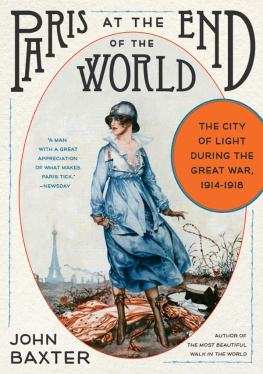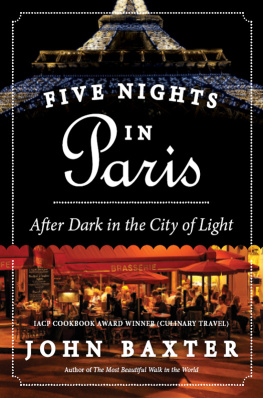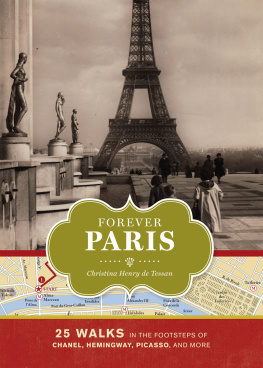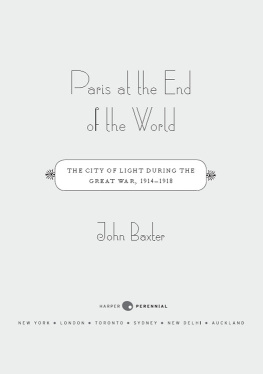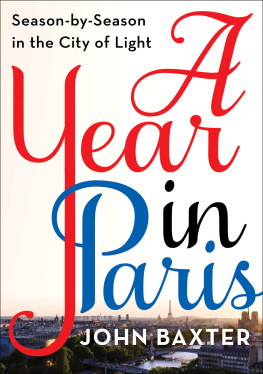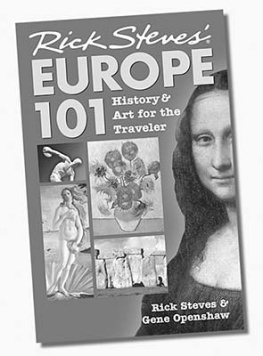In the old days, men were absorbed in wars, filling all their existence with marches, raids, victories, but now all that is a thing of the past, leaving behind it a great void which there is so far nothing to fill: humanity is searching for it passionately, and of course will find it. Ah, if only it could be quickly!
ANTON CHEKHOV , Three Sisters , 1901
Contents
We sit in calm, airy, silent rooms opening upon sunlit and embowered lawns, not a sound except of summer and of husbandry disturbs the peace; but seven million men... are in ceaseless battle from the Alps to the Ocean.
WINSTON CHURCHILL
T he first blow fell on Paris at 7:18 a.m. on March 21, 1918, interrupting the calm of a spring morning.
As its concussion echoed over the roofs, residents came to their front doors and stared at the sky. Was it another accident, like that of the previous January, when an ammunition dump in Courneuve blew up, shattering windows across the city?
People living close to the Canal Saint-Martin knew better. A crater had appeared in the wide stone towpath where horses usually dragged barges into the city. They assumed a German bomber had made an audacious solo raid, the pilot fleeing to the safety of his armys trenches that zigzagged across France from Belgium to the Swiss border.
Everywhere, Paris displayed dispiriting evidence of its vulnerability to aerial attack. Paper tape crisscrossed shop windows, and the lower portions of most monuments were heaped with sandbags. More bags blocked the doors of such great churches as Notre Dame de Paris. Wooden braces protected priceless stained glass.
Hoping to lure bombers away from the city, the army was constructing a fake Paris in the sleepy satellite town of Maisons-Laffitte, where a stretch of the Seine resembled the river as it ran through the capital. It included plywood replicas of the Arc de Triomphe and the Opra, false train tracks, and facsimiles of such industrial suburbs as Saint-Denis and Aubervilliers. Ingenious lighting and translucent paint created the effect of light shining through the dirty glass of factory roofs.
The second blast, coming only fifteen minutes after the first, dispelled the theory of a high-flying bomber. When a third shell landed fifteen minutes after that, panic gripped Paris. Could a German fifth column be responsible? The labyrinth of underground stone quarries that honeycombed the hills of Montparnasse on the southern edge of the city offered plenty of hiding places. Maybe spies had set up a clandestine battery. This theory didnt survive the first examination of shrapnel fragments. The shells that materialized from a clear sky each fifteen minutes didnt come from either bombs or aircraft but from a cannon. Parisians with long memories recalled the siege of 1871 when Prussian artillery pounded portions of the city to rubble. Now, once again, a German gun of frightening power was zeroing in on Paris.
Forty miles northeast, where a bulge in the line of trenches brought the German positions closest to the city, engineers had been busy for weeks on the slopes of Mont de Joie, near the village of Crpy. Under cover of the forest, they constructed a railway spur line and a deep concrete emplacementa nest for the greatest internal engine ever devised by man.
The barrel of the Paris-Geschtz , the Paris Gun, was as tall as a ten-story building. Each explosive charge was ten feet long. With the railway truck on which it stood, the gun weighed four hundred tons. Eighty men were needed to man itsailors, not artillerymen, since long-barrel precision gunnery was the jealously guarded province of the Kriegsmarine . Each shot expended the power of nine million horses in a gush of orange smoke and flame. The 228-pound projectile left the barrel at a mile a second. Within a minute and a half, it had climbed twenty-four miles, to the edge of space. Three minutes after firing, the shell plunged into a street, a theater, a school, or a church.
The gun wasnt hard to find. Once the French realized that its shells fell along a single line, pinpointing its location became a matter of simple ballistics. What followed was a game of hide-and-seek, the French bombing and shelling the area around Crpy, the Germans laboriously shifting the gun to new emplacements and moving other units into the area to confuse aerial spotting.
French government propagandists encouraged magazines and newspapers to convey an image of a tranquil Paris going about its business; illustrations showed groups of women working on embroidery by a window and concierges chatting on the sidewalk while children played nearby. Andr Lefvre, an engineer in the city government, pointed out that serious results from long-range guns were unlikely, as they were worn out after 80 or 100 shots. In fact, the barrels of this weapon were sent back to the Krupp factory after only sixty-five firings.

The Paris Gunrange: 40 miles
Though it inflicted only modest damage, the Paris-Geschtz taught Paris it was not exempt from war. Penance for this sin of omission was due, and soon paid. Seventy-one people died after a direct hit on the Bolivar mtro station. On March 29, 1918Good Fridaya shell plunged through the roof of the church of Saint-Gervais, in the very heart of the Marais, one of the citys oldest districts. It killed eighty-eight people and injured seventy-eightthe worst civilian casualties of the war. Next day, all Paris churches closed. Forced underground, the pious worshipped like early Christians, in cellars and catacombs. On Sundays in May and early June children in white veils and suits filed into basements, including that of the Bon March department store, to receive their First Communion.

The French 75range: six miles
Before the Germans retired the weapon, it had fired 367 shells, killing 256 people and wounding 620by trench standards a small loss, but of far greater damage psychologically. Parisians had believed intelligence, wit, and style could protect them from the worst effects of the war. Now they saw that these had the evanescence of a soap bubble. The grace of the belle poque had ended. The madness of les annes folles was about to begin.
He had burned several times to enlist. Tales of great movements shook the land. They might not be distinctly Homeric, but there seemed to be much glory in them. He had read of marches, sieges, conflicts, and he had longed to see it all. His busy mind had drawn for him large pictures extravagant in color, lurid with breathless deeds.
STEPHEN CRANE , The Red Badge of Courage
I n the bleak midwinter of 1916, General Douglas Haig, commander of the Allied armies in Europe, visited the Flanders front to unveil his plans for a spring offensive against the Central Powers of Germany and Austria.
He made his visit at a black time. In July of 1915, his attempt to break through the German lines had ended in slaughter. Believing that his men would take the enemy trenches without much trouble, he ordered them to advance standing upright, bayonets fixed. Within a few seconds, most were scythed down by fire from machine guns, a weapon Haig thought much over-rated.
The British and French, supported by Canadian, Indian, and Australian volunteers, suffered 420,000 casualties during this campaign, 60,000 on the first day. The French alone lost 200,000 men and the Germans nearly 500,000 before the fighting halted in November for the winter and the war froze into stalemate.

